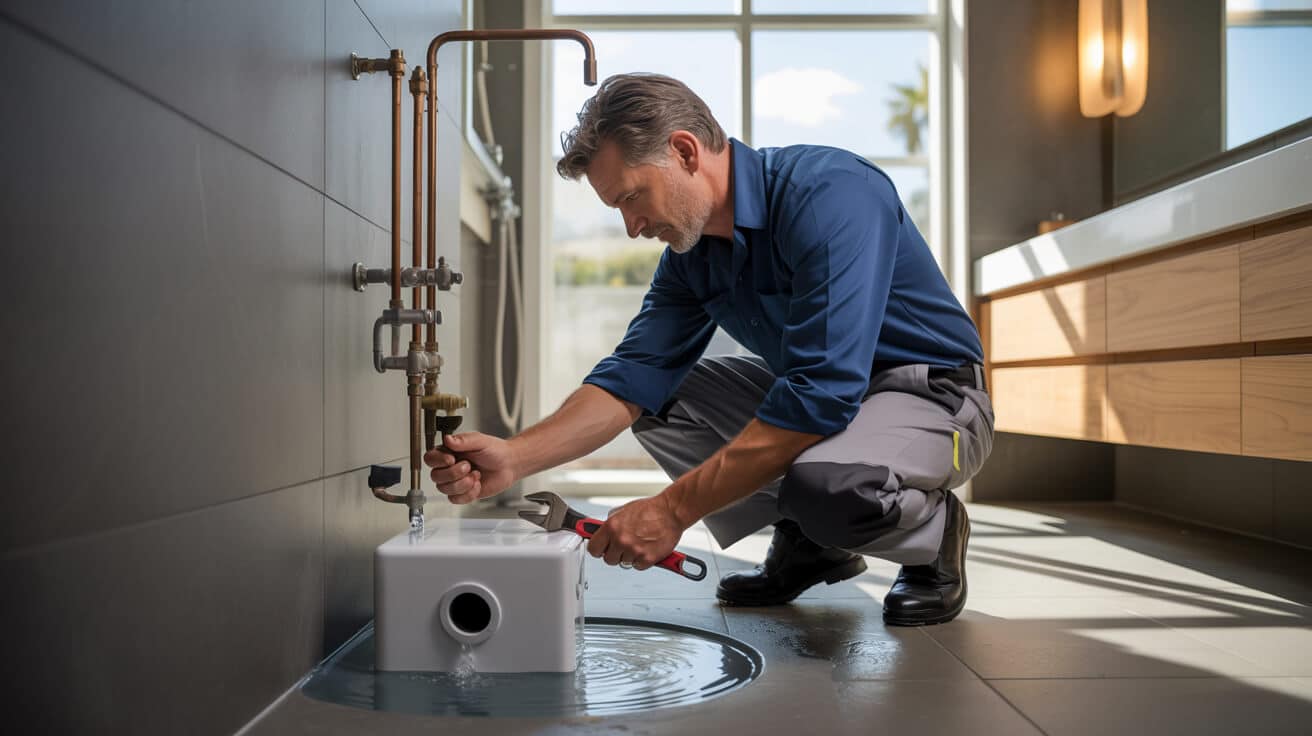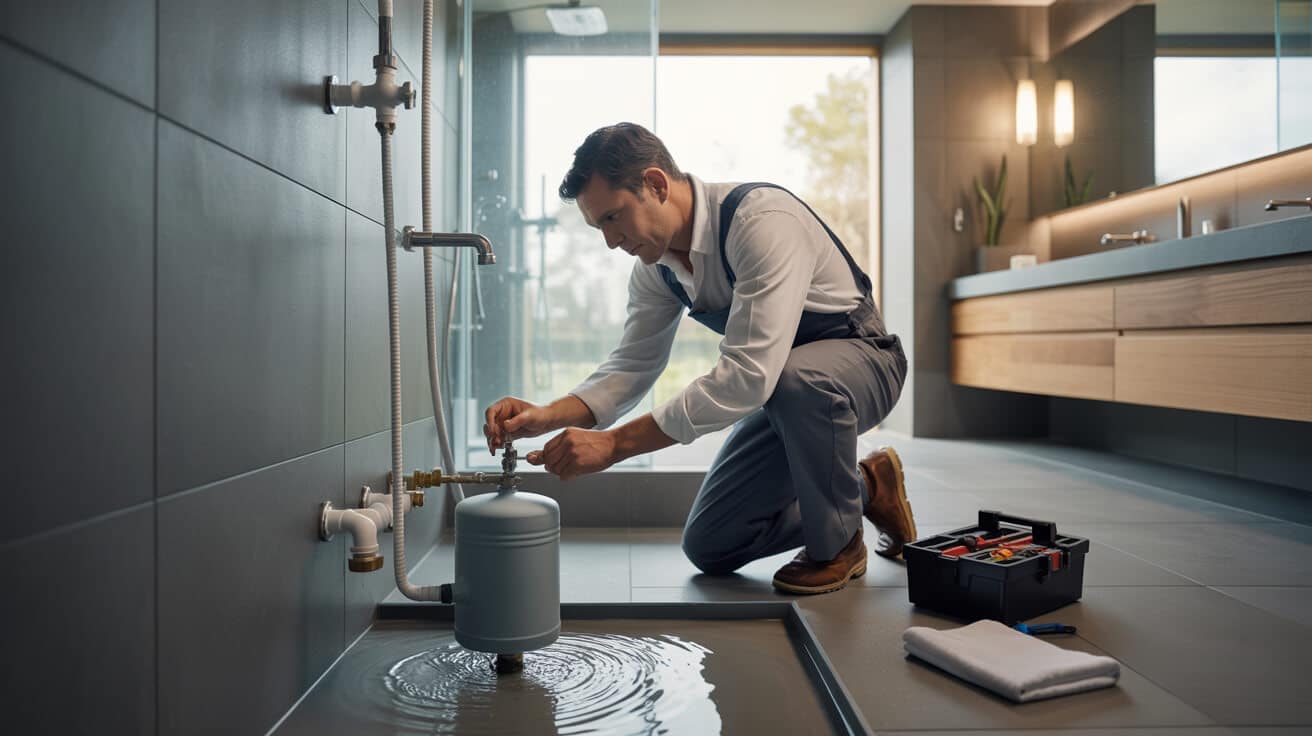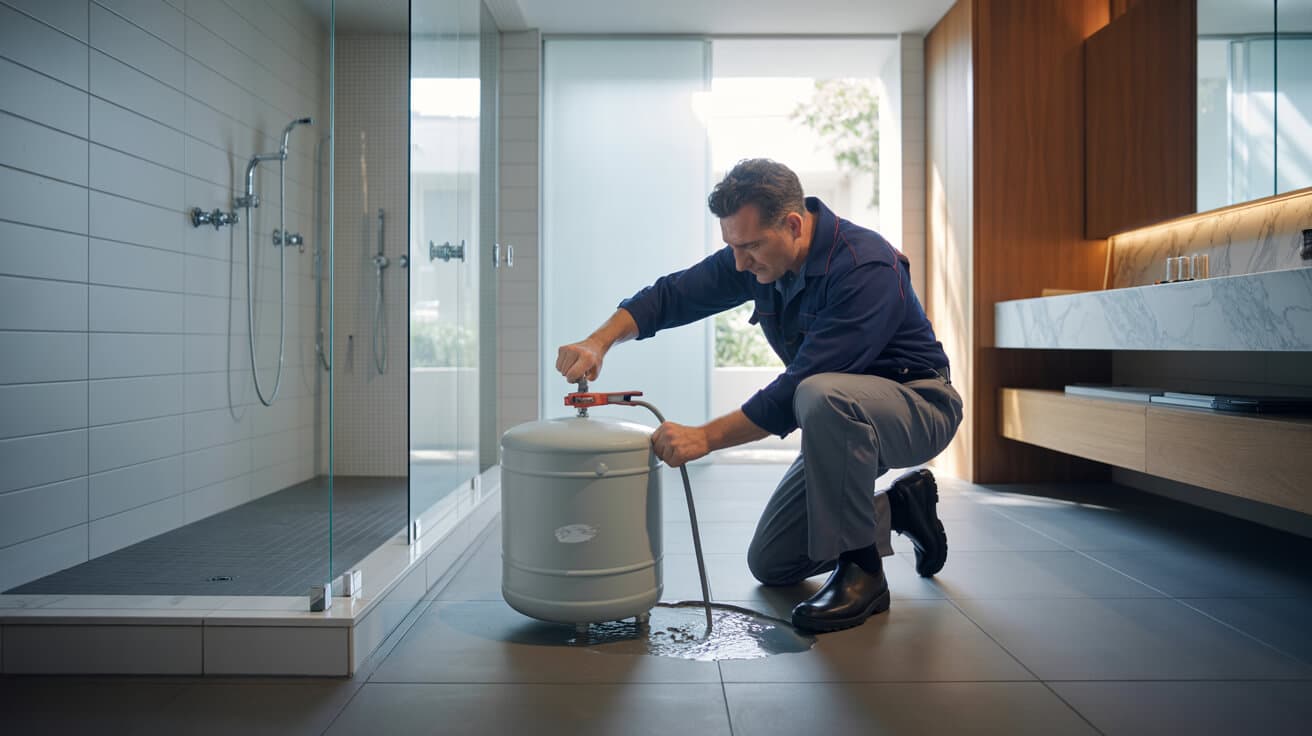A cold water tank overflow, left unchecked, can quickly escalate from minor inconvenience to major property threat. Signs typically emerge as water pouring or dripping from external pipes, recurring damp patches in upper floors or attic spaces, and persistent audible refilling within the building structure. Root causes quietly accumulate—mechanical wear, pressure anomalies, seasonal temperature swings—until a critical threshold is breached. For property owners and managers, the experience combines immediate anxiety with latent concern about hidden damage, resource waste, escalating repair costs, or breach of legal obligations.
Overflow incidents often reveal systemic gaps in routine inspection or service culture. Regulatory frameworks such as the UK’s Water Supply (Water Fittings) Regulations 1999 compel a proactive stance, mandating robust controls and approved product choice. Plumbers 4U and similar services provide remedy through reliable diagnostics and predefined repair protocols, framing solutions that extend beyond technical repairs to encompass compliance, risk documentation, and user assurance for your assets.
Etymology or Name Origin
The term “cold water tank” traces its roots to historical British plumbing, where “tank” or “cistern” denoted vessels for storage and distribution of water within homes prior to the universal adoption of direct, pressurised supply. The word “overflow” derives from hydraulic and civil engineering, referencing controlled escape of excess liquid from a closed system. “Ball valve”—the mechanism most associated with overflow control—entered common use in nineteenth-century plumbing lexicon, designating the float-actuated device regulating supply inflow based on water level, and remains central in standards documentation.
Regional variations in terminology persist. In the United States, similar systems may be called “header tanks” or “expansion tanks” where context dictates function, yet the essential operating principle—a gravity-fed, lidded vessel with a float-closed valve—remains universal.
Overview / Context
cold water storage tanks are installed to buffer the domestic or commercial plumbing system from sudden pressure changes, enable gravity-feed supply, and guarantee water availability during main supply interruptions. Their presence is mandated or preferred in buildings using indirect vented hot water systems, or in situations where water authority pressures fall below fixture requirements for showers, baths, or industrial equipment.
The overflow pipe acts as the primary signaller of system distress. By redirecting ultimately harmless excess water to an exterior visible point, it prevents far more severe outcomes: internal leak migration, ceiling collapse, or ongoing building envelope compromise. Overflows thus serve as both symptom and safety valve—essential for asset preservation and user warning.
Regulatory frameworks, especially in the UK and comparable international regimes, require that all storage tanks include overflow pipes, are composed of WRAS-approved (Water Regulations Advisory Scheme) materials, and feature fitted lids and insulation. Placement, capacity, and access are prescribed by Building Regulations, reflecting contemporary priorities of health, efficiency, and resilience.
History
Origins
Cisterns and storage tanks have ancient heritage, with early iterations fashioned from lead, timber, or stone. Their function in British homes crystallised during the Industrial Revolution, as municipal supply became widespread but pressure remained unreliable. Victorian tenements, mansions, and commercial lodgings employed large, open-topped metal cisterns sited high to guarantee flow, seed modern overflow protocols, and foreshadow the evolution of plumbing as a regulated trade.
Industrial Emergence
As steel and galvanised iron became common, tanks reduced in size and complexity but improved in reliability. The introduction of ball valves in the late nineteenth century was pivotal. Innovations like the equilibrium valve, air gap, and separate storage for drinking and service water created distinctions still enshrined in property codes today. By the mid-twentieth century, modern residential and commercial plumbing standards required all header tanks to feature visible, unobstructed overflow discharge.
Plastic and glass-reinforced tanks emerged in the 1960s and 1970s, driven by cost, hygiene, and corrosion resistance. Insulation protocols evolved in parallel, responding to increasing awareness of freeze-thaw damage and water hygiene standards.
Contemporary Evolution
Today’s systems employ high-density polyethylene (HDPE), advanced integral insulation, and low-profile designs suited for tight roof spaces. Tank kits are delivered with pre-formed lids, factory-fitted ball valves, and WRAS certification—simplifying installation and enforcing regulatory best practice. Overflow function remains central, but with heightened focus on user signals, documentation, and asset management compliance.

Concept / Description
Core Components
A cold water tank system comprises:
- Tank (cistern): Main storage vessel, usually HDPE or GRP, sized by building demand and occupancy. Lidded, insulated, and set on a stable, level base insulated from cold.
- Float/ball valve: Float arm with ball (copper or plastic) rising with water level; operates valve to stop inflow at preset height.
- Supply inlet: Connection point for incoming mains or pumped supply. Sometimes fitted with service isolation valve.
- Overflow pipe: Routed from near the rim to exterior or visible drain; must always remain unobstructed and direct water safely beyond building shell.
- Outlet(s): Feeds to fixtures, indirect cylinders, or downstream systems.
- Access: Inspection hatch or lid, required in almost all installations for periodic service or repair.
Overflow Mechanism
The principal safeguard against tank overfilling is the ball (float) valve. As the tank fills, the float rises and mechanically closes the valve at a set water level. Typical UK standards specify 25–50 mm below overflow rim for cut-off. If failure occurs—a punctured float, worn washer, stuck arm—the supply does not shut off, and water is ejected through the overflow pipe. This action prevents tank breaching or internal spillage, but continuously signals the need for intervention.
Most overflows are 21.5 mm or 22 mm in diameter, allowing for modest discharge rates; commercial tanks feature up-rated pipe sizes. Pipes are often white plastic, visible on the eaves, and set to terminate where any leak is immediately noticeable to occupants or routine inspection.
Structural Elements
Location and mounting are vital. Tanks sited in lofts or plant rooms require stable, insulated base supports and sufficient access for valve adjustment or tank replacement. Installers must maintain clearances for insulation wraps and visible, unobstructed tailing of overflow pipes to comply with regulatory requirements.
Security of tank covers and insulation is mandated to prevent entry of debris, insects, or vermin, and support maintenance of water hygiene.
Functionality / Purpose / Applications
Residential Property
For homeowners, cold water tanks allow for gravity-fed systems, consistent shower performance, and buffer against supply interruptions. Properties relying on indirect (open-vented) hot water cylinders require correct tank specification to avoid contamination and air entrainment. Night-time overflows are common, resulting from unnoticed valve wear.
Multi-Occupancy and Managed Assets
Landlords and property managers must ensure that tanks in shared properties are regularly inspected, compliant with current standards, and serviced with certified parts. Schedules for annual or bi-annual checks are standard in social and public housing. Overflow events demand immediate response to prevent inter-tenant disputes and building risk escalation.
Commercial and Institutional Installations
Facilities directors or building services professionals in hospitals, universities, or offices will oversee tanks of greater scale, often with multiplexed systems to guarantee redundancy. Sensor-based monitoring and asset tagging become relevant as part of broader compliance and risk transfer strategy. Documentation is rigorously maintained for insurer and auditor review.
Overflow as Prevention
Overflow discharge acts as an early warning system. A short-lived event may result from transient supply surges or valve ice—but persistent overflow, however minor, requires systematic investigation. For your company or organisation, ignoring an external trickle can result in hidden structural decay and long-term liability.
Classifications / Types / Variants
| Type | Characteristic Material | Typical Use Case | Key Distinction |
|---|---|---|---|
| Galvanised steel tank | Iron/steel + zinc coat | Legacy UK housing | Prone to corrosion, difficult repair |
| Polyethylene tank | HDPE/Polypropylene | Modern standard | Hygenic, corrosion-resistant |
| GRP tank | Glass-reinforced plastic | Commercial/large-scale | High volume, integral insulation |
| Loft/attic | Locational | Domestic, gravity-fed | Subject to freeze, easy inspection |
| Plant room/wall mount | Locational | Commercial setups | Centralised inspection, multi-tank |
| Closed/insulated | Structural | All applications | Meets modern regulation |
| Open/uncovered | Structural | Obsolete/legacy | Poor hygiene, not compliant |
Modern tanks also differ by intended service—potable versus non-potable water. Regulation increasingly mandates the distinction and physical separation of systems.
Systems / Tools / Methodologies
Standard Tools and Equipment
- Spanners, adjustable wrenches, water pump pliers: For ball valve and pipe manipulations.
- Float/valve replacement kits: WRAS-approved for direct replacement.
- PTFE tape, sealing compounds: Ensures watertight reassembly.
- Endoscope/camera tools: For confined/obstructed tanks, visual inspection.
- Moisture/thermal metres: Evaluate leak migration, cold-spot mapping.
- Safety equipment: Loft ladders, masks (for dusty/older installations), gloves, insulated tools.
Remediation Protocol
- Confirm signs of overflow (visual/audible, interior/exterior).
- Isolate supply at stopcock; open highest outlet to depressurize system.
- Visibly inspect tank; check float function, lift and listen for free movement.
- Examine float for water ingress (puncture) or mechanical binding.
- Remove and thoroughly examine ball valve; clean, replace washer or full valve if required.
- Inspect overflow pipe for blockages, kinks, external discharge point.
- Reinstall, test system by repressurizing and verifying valve cut-off height below overflow rim.
- Secure lid and insulation.
- Record repair in maintenance log; notify landlord/management for compliance.

Stakeholders / Entities Involved
Homeowners
You benefit from routine tank inspection and prompt reporting of any overflow event. Awareness of the overflow pipe’s location and regular checks increase your asset’s protection and minimise insurance friction.
Tenants
Your responsibility is to promptly notify landlords or property managers if overflow, damp, or internal leaks are observed. Taking early action prevents escalation and mitigates disruption.
Landlords and Property Managers
Your legal duty of care includes ensuring tanks are compliant, inspected annually, and repaired by suitably qualified professionals. Retain service documents for property audits and tenant correspondence. Neglecting overflow incidents may result in enforcement action or insurance denial.
Facilities Directors
Your risk management strategy extends to regular system audits, asset tagging, and standardised response protocols for overflow or leak events in the portfolio. Strong vendor relationships with providers like Plumbers 4U streamline remedial action and certified documentation.
Plumbers and Service Professionals
Our services include rapid diagnostics, WRAS-approved repairs, valve calibration, and comprehensive service logs. Documentation is provided post-service for compliance and peace of mind.
Insurance Assessors
Claims are supported by detailed records of tank inspection, repair, and WRAS-compliance. Timely intervention can mitigate costly structural and contents claims.
Legal, Regulatory, and Ethical Considerations
Regulatory Matrix
| Framework | Mandate |
|---|---|
| Water Fittings Regulations 1999 | Approved tank/fittings, overflow pipe, access |
| BS 6700 | Dimensional/spec design, valve cut-off height |
| Building Regulations Part G | Hygiene, accessibility, insulation |
| WRAS Approval | Product certification for UK supply chain |
Ethical and Legal Duties
- Owners, landlords, managers must repair overflow leaks within reasonable timeframes to protect safety and hygiene.
- Documentation is necessary for all inspected, repaired, or replaced tank systems.
Product and Service Compliance
All replacement valves, floats, and tanks should be WRAS or equivalent certified. Repairs without compliant parts risk insurance and legal recourse.
Record-Keeping
Property portfolios should maintain logs of all inspections and remedial works—preferably with photographic or timestamped service sheets.
Performance Metrics / Data / Measurements
Health and Compliance Indicators
- Frequency of overflow events: Should diminish post-maintenance.
- Valve shutoff response time: Measured as time between lift and supply cessation.
- Compliance audit results: Binary (pass/fail); tracked per regulatory period.
- Downtime or inconvenience: Logged per incident for management analysis.
| Metric | Typical Range | Target |
|---|---|---|
| Overflow frequency | 0–1/annum | 0 |
| Valve replacement | 3–5 yrs | Every 5 years |
| Service inspection | Annual | Biannual (optimal) |
| Audit pass | ~95%+ | 100% |
Quality Assurance
Our services provide full logs and post-repair reporting, including WRAS-cert documentation for all new parts fitted.
Challenges / Barriers / Limitations
Operational and Technical
- Inaccessible tanks (boxed-in, insulation-packed lofts) raise risk and complexity.
- Legacy pipework or outdated fittings necessitate custom intervention.
Economic and Social Factors
- Cost of urgent intervention can deter landlords or homeowners from prompt action, especially where insurance excesses or cashflow challenges exist.
- Communication between tenants, agents, and professionals may delay repair, increasing risk/claim costs.
Philosophical and Policy
- Proactive, scheduled maintenance is less common than truly optimal, often deferred until incident.
- There is sociocultural variability in attitudes towards plumbing as “background infrastructure,” impacting resource allocation for prevention.
Impact / Influence / Legacy
Prompt resolution of cold water tank overflow preserves property value, averts disruptive long-term damp and rot, and supports positive tenant and insurance outcomes. Owners who practice transparent, compliant service management position their assets—even when unseen infrastructure like tanks is involved—as reliably maintained, market-competitive, and attractive for future transaction.
Experienced managers distinguish themselves through meticulous record-keeping, responsive maintenance, and by forming relationships with certified service providers such as Plumbers 4U. This commitment translates into increased satisfaction, fewer disputes, and stronger regulatory positioning for your company or portfolio.
Future directions, cultural relevance, and design discourse
The next generation of cold water storage tanks features improved resilience through advanced polymers, passive thermal barriers, and simplified inspection access. Engineering focus continues to shift from mere containment to integrated system intelligence—automated diagnostics, enhanced visual notification, and keyless lid designs set new standards for user interaction and safety.
Regulatory trends increasingly prioritise enforceable inspection frequencies, digital service logs, and property data integration. Socially, plumbing maintenance is being reframed from reactive chore to integral stewardship—a cultural shift propelled by changing risk appetites, climate concerns, and evolving tenant expectations.
As your organisation considers system upgrades or response protocols, anticipate a world where water infrastructure is no longer silent: every overflow becomes a data point, every tank an opportunity for demonstrable stewardship, and every repair a signature of ongoing professional diligence.

